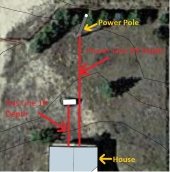
 2
2











 1
1




Iterations are fine, we don't have to be perfect
My 2nd Location:Florida HardinessZone:10 AHS:10 GDD:8500 Rainfall:2in/mth winter, 8in/mth summer, Soil:Sand pH8 Flat
 2
2




"You may never know what results come of your action, but if you do nothing there will be no result”
How Permies.com Works
Be Nice










 1
1




Iterations are fine, we don't have to be perfect
My 2nd Location:Florida HardinessZone:10 AHS:10 GDD:8500 Rainfall:2in/mth winter, 8in/mth summer, Soil:Sand pH8 Flat








Alex Ames wrote:There is another video from Geoff Lawton that explains that the swale is designed with an overflow system. He is doing it
in miniature in the dirt. I can't find it but it is out there. There is some precision required to get it right so the heavy rains
don't just over flow it and take it out as you fear.
 5
5




"We have changed the world, and we wonder why things won't stay the same." -Les Lanyon
 1
1




"We have changed the world, and we wonder why things won't stay the same." -Les Lanyon




Jonathan Teller-Elsberg wrote:After I complained yesterday about not finding an easy source of info on determining swale sizes and spaces, I decided to construct such a thing. Using Lancaster's formulas, I built a spreadsheet that allows quick calculation of related swale sizes and spacings. You can start either with a certain size in mind and learn the associated spacing, or start with a spacing in mind and learn the associated size(s). I have posted it towards the bottom of http://www.terrapermadesign.com/home/garden-and-landscape-tips/.
New to Detroit. Looking to help out with current permaculture and urban farming projects. Here is my blog from when I was an urban homesteader in Ohio but I am continuing to post about our suburban adventures in Permaculture. http://crunchymamasurbanhomestead.wordpress.com/








Meghan Orbek wrote:Yeah, Jonathan! That sounds great but the link isn't working! Can you please repost it?
If I am not for myself, who will be for me?
If I am only for myself, what am I?
If not now, when?

|
Talk sense to a fool and he calls you foolish. -Euripides A foolish tiny ad:
Rocket mass heaters in greenhouses can be tricky - these plans make them easy:
Wet Tolerant Rocket Mass Heater in a Greenhouse Plans
|






